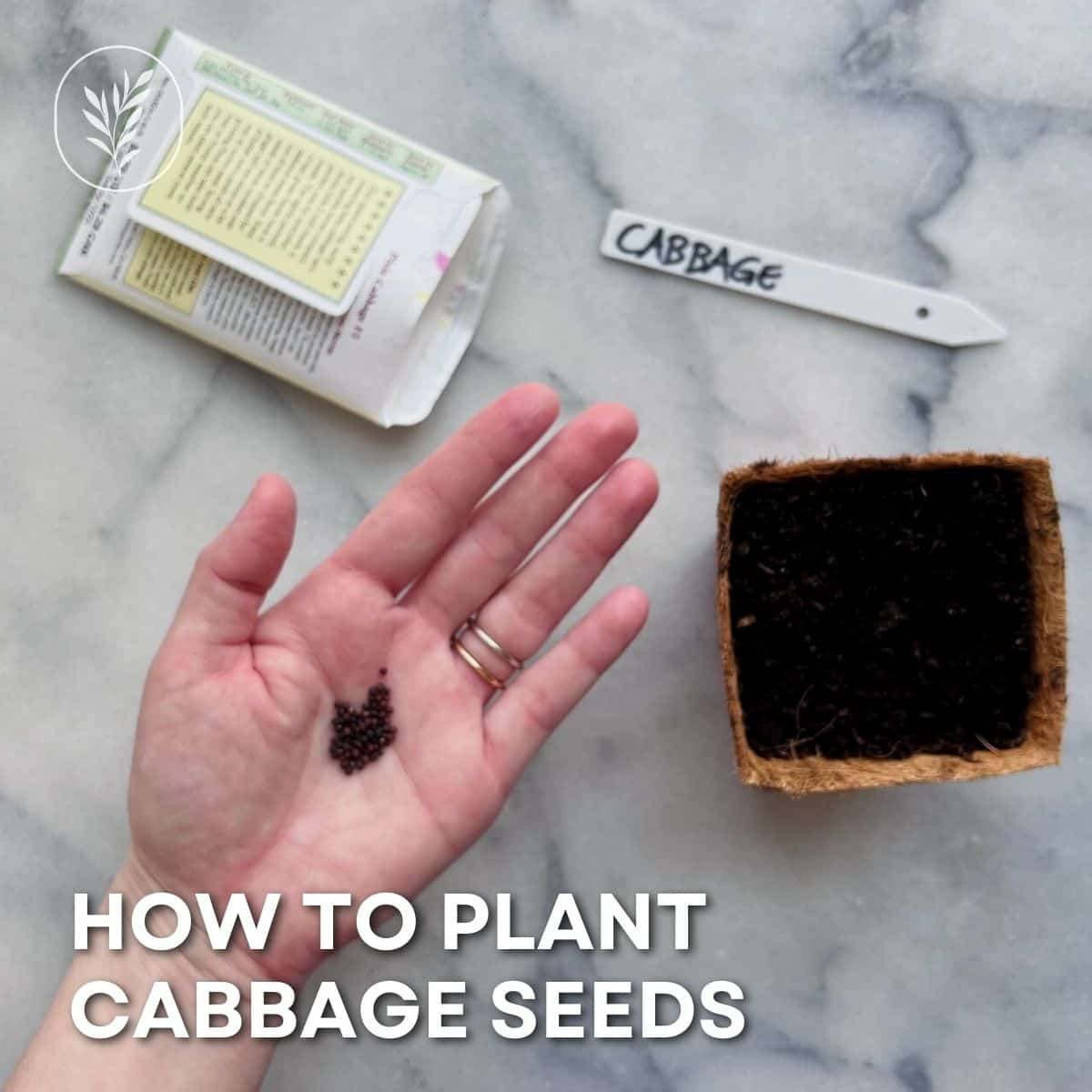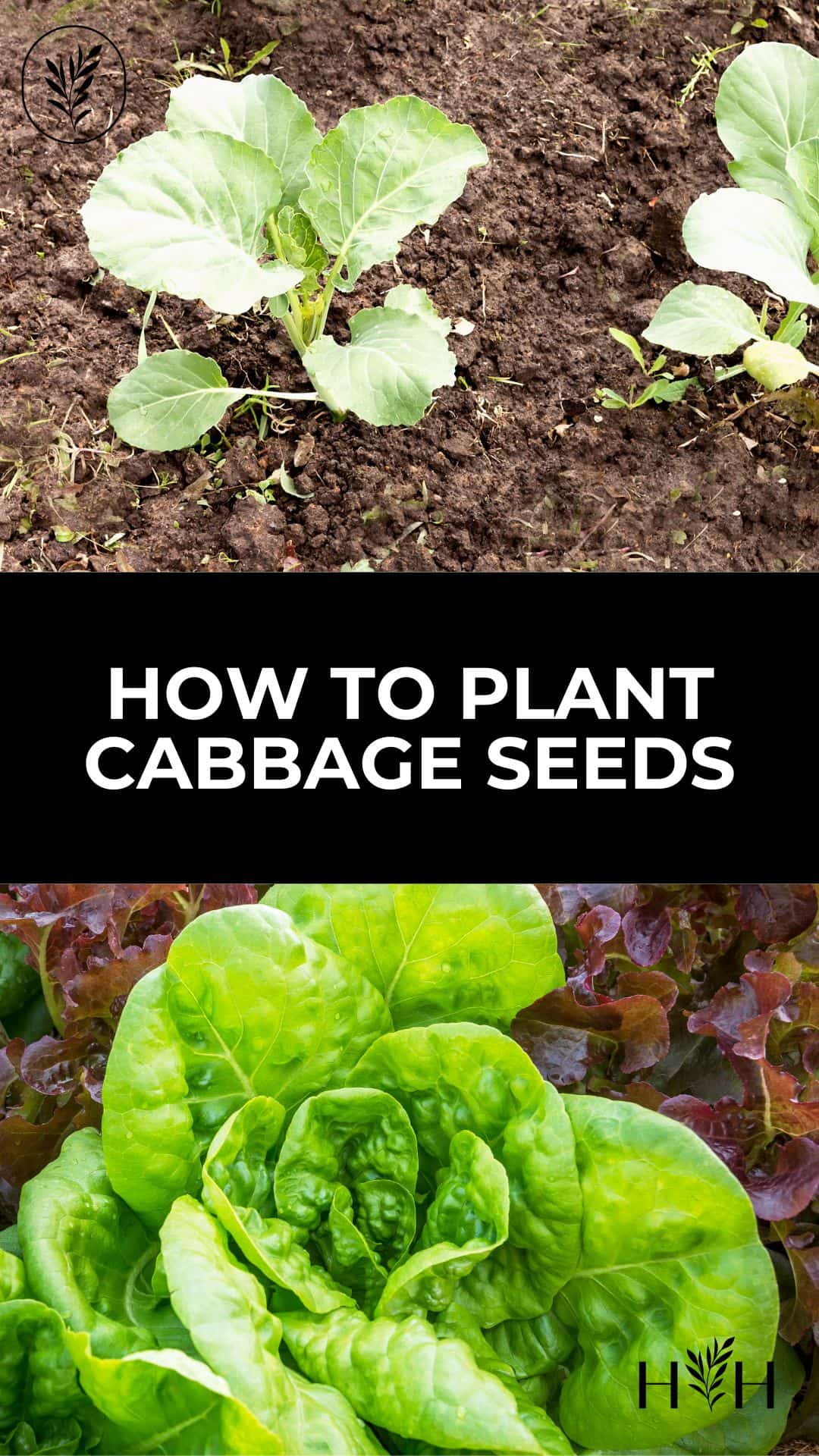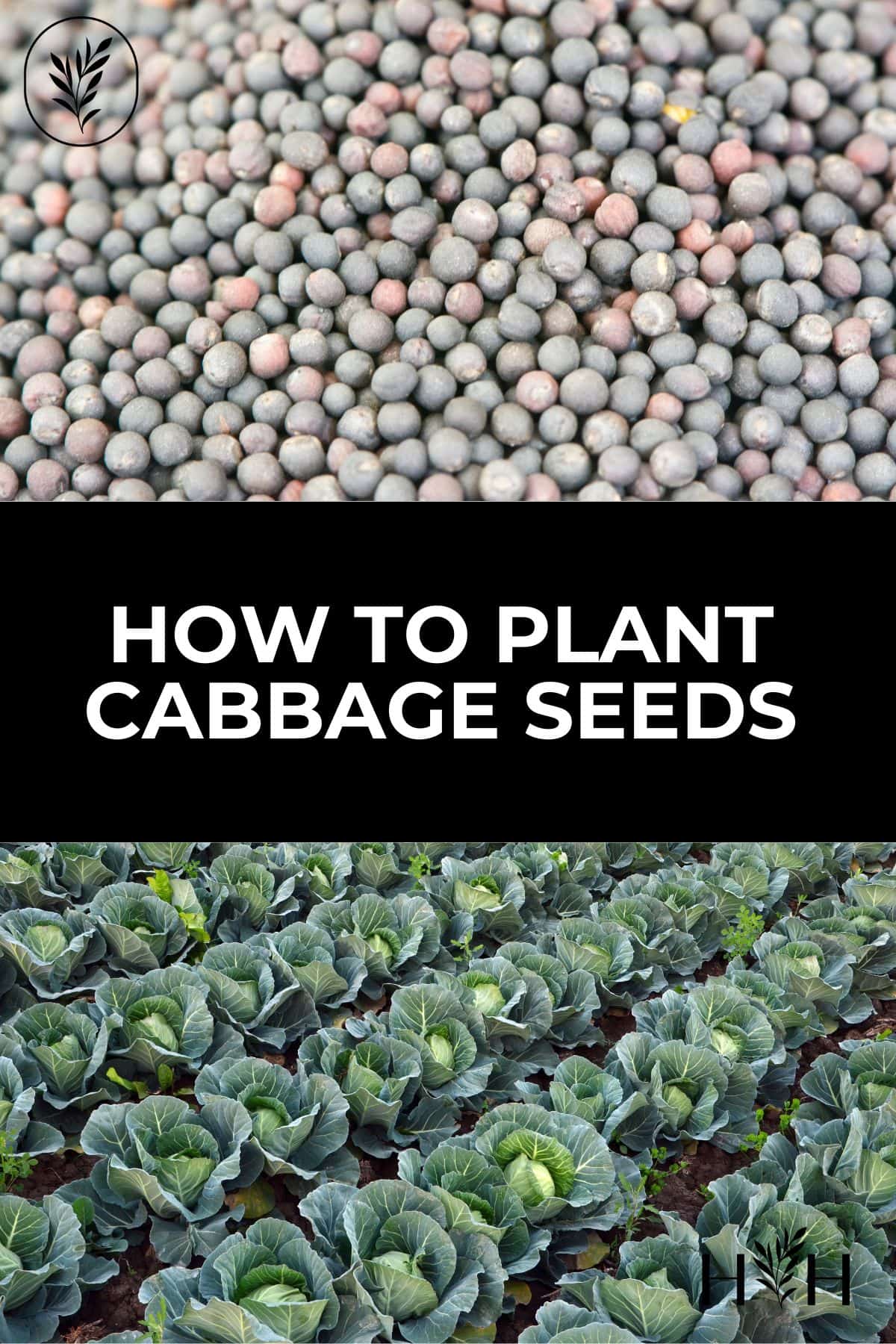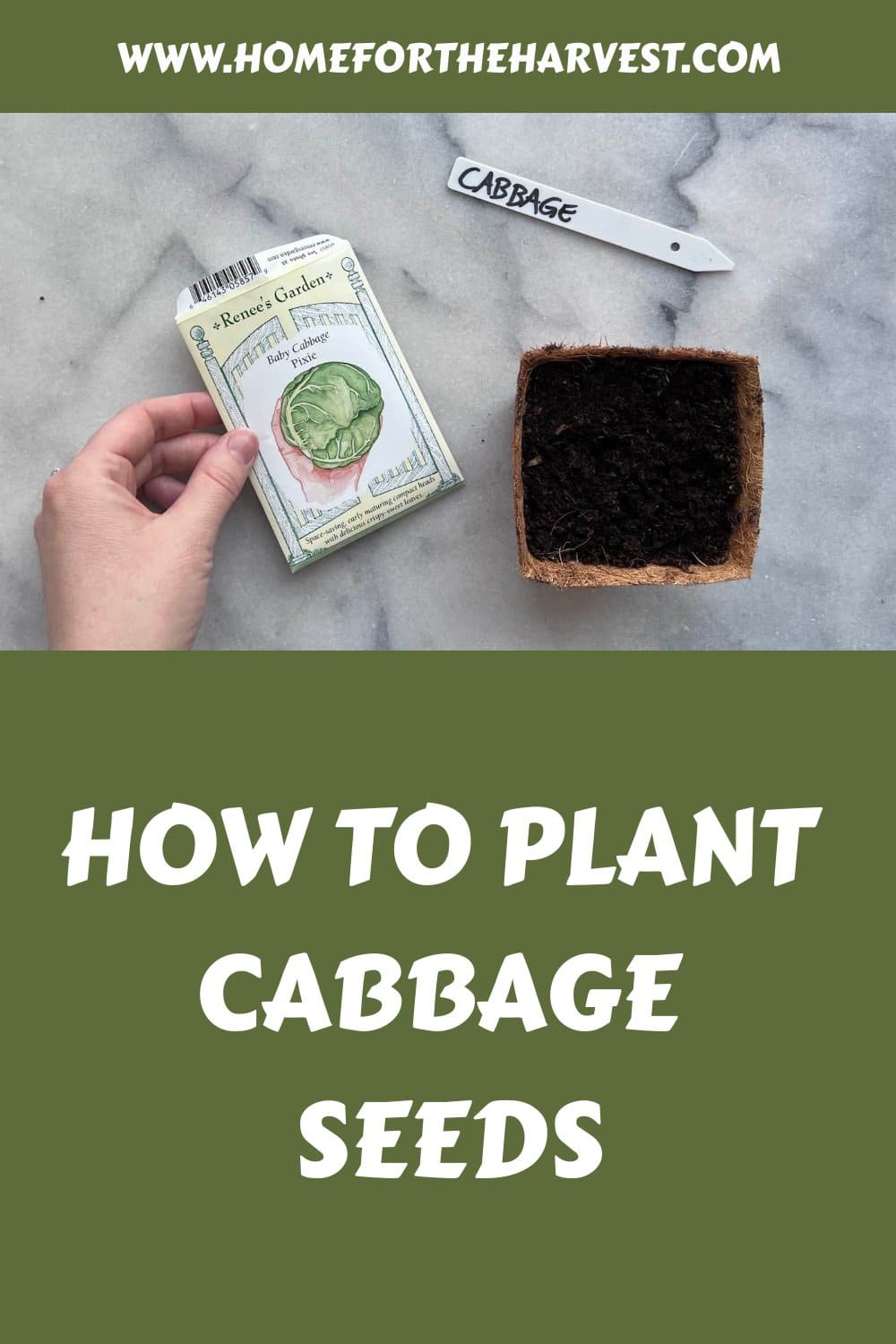Wondering how to plant cabbage seeds? We’ll cover all the basics of planting cabbage seeds indoors or outdoors, caring for them after they’re planted, as well as common problems when growing seedlings. So let’s get started on your journey toward becoming an expert at planting those delicious cabbages.
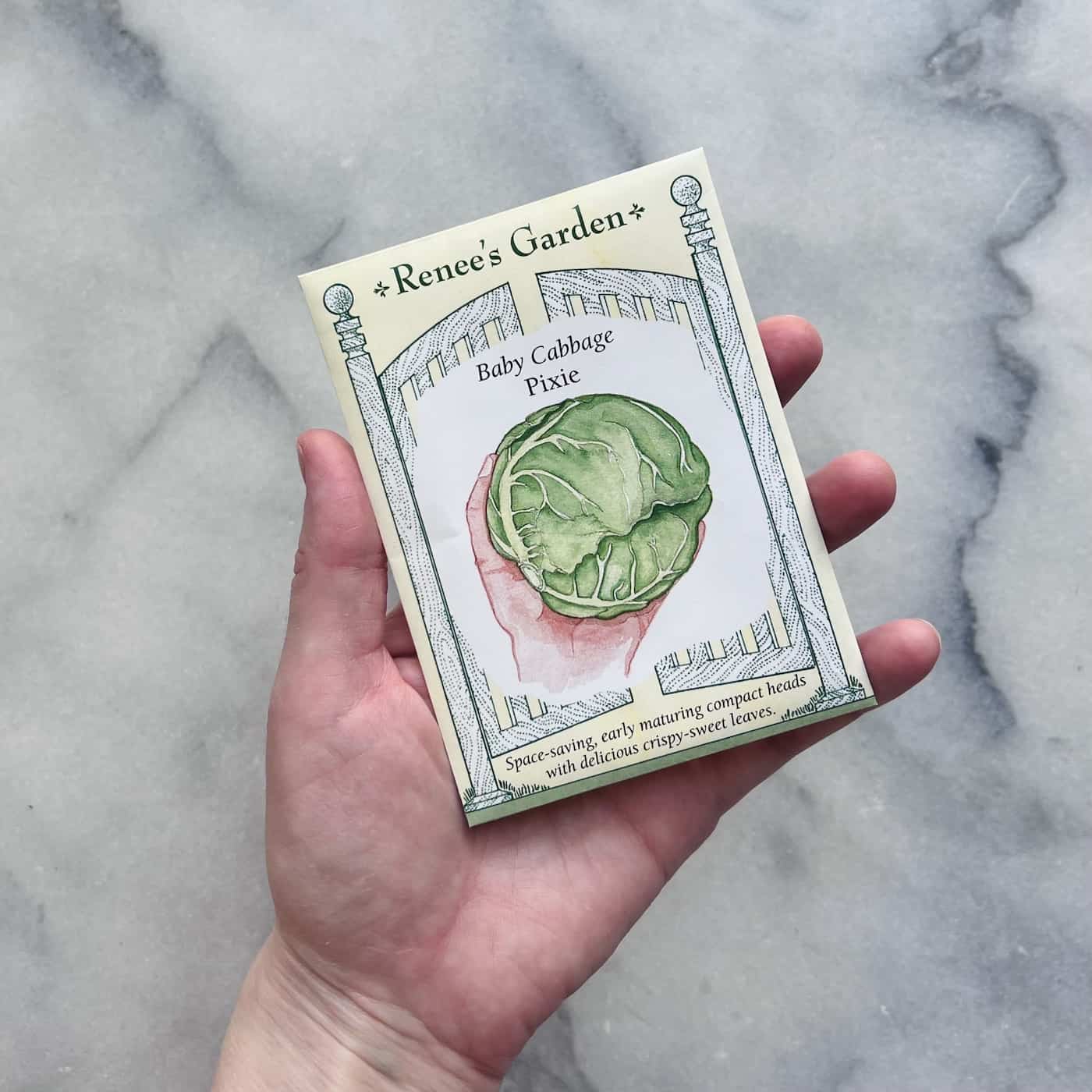
The basics of how to plant cabbage seeds
Cultivating cabbage is an excellent way to introduce homegrown produce into your home. Cabbage is a cool-season vegetable suited for spring or fall crops, and the process of planting cabbage seeds can be easy if you follow these steps.
Start by choosing your variety of cabbage seeds. Some are mini varieties with a short growing season, while others are meant for overwintering. Make sure you read the instructions on the seed packet before starting.
Decide when to sow your seeds based on your location – early spring or late summer/early fall. You can start them indoors about 6 weeks prior to transplanting outside or directly in the ground once it has thawed in the spring.
Plant each seed about a 1/2 inch deep into well-drained soil with good fertility levels. Once plants have emerged in their seedling trays it’s time to set them out into larger containers or even directly in garden beds.
Space the plants out by about 12 inches. Use plant tags so that you remember which type of cabbage was planted where. Once transplanted, water regularly but avoid overwatering as this can cause root rot. Using liquid fertilizer every few weeks is also recommended for optimal growth conditions and yields later down the line during harvest season.
How to plant cabbage seeds indoors
Beginning the growing season early can be accomplished by starting cabbage seeds indoors. It’s important to choose the right potting and container for your seedlings and provide them with plenty of light and warmth as they germinate. Here are some tips on how to plant cabbage seeds indoors successfully.
Start with a clean seedling tray or another type of growing container with good drainage. You’ll also need fresh potting soil, as well as your cabbage seeds. You can soak the seeds for a few hours before planting, but that is not strictly necessary.
Fill each container with moist potting soil, leaving about a half inch at the top. Water the containers to help settle the soil and check that water is draining out nicely. Then poke a small hole in the top of the soil surface of each container, about a 1/4 inch deep or so.
Plant two or three cabbage seeds into the soil about 1/4 inch deep. Cover with moist potting mix, pressing down lightly after planting each one. Maintain the soil damp, yet not soaked while awaiting germination. Germination usually happens in about a week indoors.
Once sprouted, thin out any extra seedlings by snipping off weaker ones at their base with scissors until you have only one healthy seedling per inch remaining. You’ll likely also want to reduce the temperature, as cabbage seedlings are prone to fungal disease in warm, stagnant indoor air.
Cabbage plants grow best in the range of about 60°-65°F (16°-18°C). If fungal damping off or wilt has been a problem with your brassica seedlings in the past, consider lowering the nighttime temperature even more, to 50°-55°F (10°-13°C). This will discourage the fungus without harming the cabbage seedlings.
Place your containers near a sunny window where they will receive direct sunlight for at least six hours daily; if necessary, use grows lights to supplement natural light during cloudy weather periods or winter months when daylight hours are shorter than usual.
Cabbage seedlings are usually transplanted out into the outdoor garden about four weeks after planting. The seedlings are typically quite cold-hardy and can survive a light frost if covered with fabric or row cover the night before. Just be sure to harden off your seedlings before planting them out.
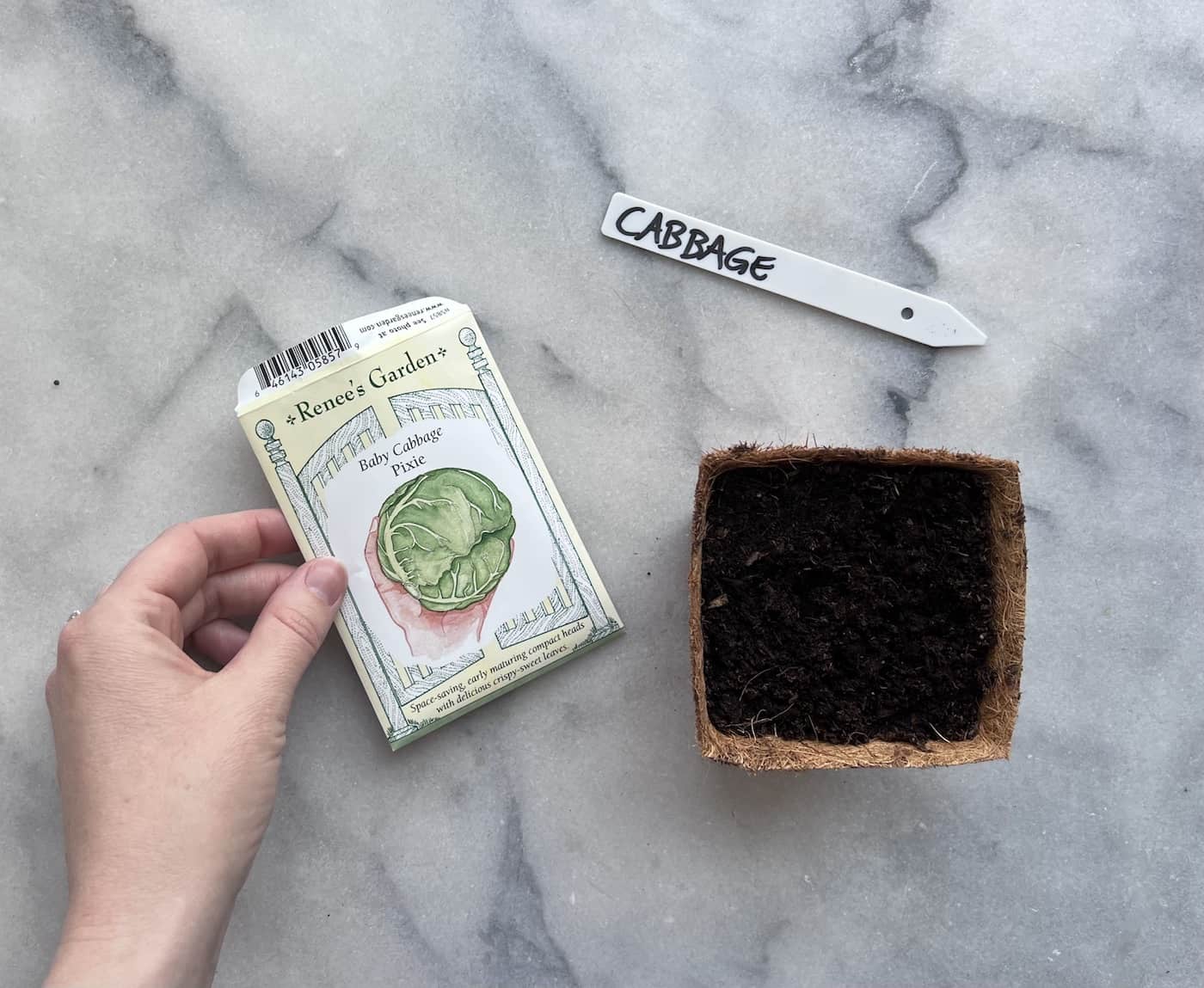
How to plant cabbage seeds outdoors
Sowing cabbage seeds in the garden is an excellent way to begin your springtime garden. It’s an easy process that requires just a few simple steps and supplies.
First, choose the right variety of cabbage for your climate, soil type, and preferences. While cabbage seeds are usually planted indoors so you can transplant seedlings into the garden, you can also just plant the cabbage seeds straight into the soil.
Poke small planting holes about 1/4 inch deep. You’ll want a plant every 12 inches, but it usually also makes sense to plant some extra seeds in case some don’t work out. You may wish to plant 2 seeds every six inches, or something like that. Then you’ll trim out the weaker ones a few weeks after the seeds sprout.
Maintain regularity in terms of weeding around each plant so weeds don’t compete for nutrients and water resources; provide a dose of balanced organic fertilizer every two weeks during active growth periods; make sure ample moisture is supplied throughout its life cycle. Additionally, do not forget to rotate crops annually so that disease organisms can’t accumulate over time in the soil where brassicas are cultivated.
Caring for cabbage seeds after planting
Once you’ve planted your cabbage seeds, it’s time to start caring for them. Proper care will ensure healthy and vibrant plants that produce delicious heads of cabbage.
Watering cabbage seedlings
Make sure the soil is consistently moist but not overly saturated. Water deeply once a week if there hasn’t been any rain, or use a drip irrigation system for more consistent watering. Avoid wetting the leaves, as this can cause fungal diseases like black rot and downy mildew.
Weeding your seedlings
Remove weeds regularly from around the seedlings so they don’t compete with your cabbage plants for nutrients and water. Hand-pulling is usually enough, but if you have persistent weeds, consider using an organic herbicide like vinegar or boiling water instead of chemical products.
Fertilizing seedlings
Fertilize every two weeks during the growing season with a balanced fertilizer or homemade compost to encourage growth and head formation in mature plants without burning young roots. You can also add composted manure or fish emulsion to give extra nutrition when needed, especially during dry periods when supplemental fertilization may be necessary for good yields.
Common problems when growing cabbage seedlings
Common problems when growing cabbage seedlings can be a daunting task for inexperienced gardeners. With a bit of know-how and perseverance, you can quickly cultivate thriving cabbage plants. Consequently, potential cabbage growers should be aware of a few common pitfalls.
Pests
Cabbage worms, aphids, and other pests are the most common problem when growing cabbage seedlings. To prevent these from ruining your crop, use insecticide or organic pest control methods such as companion planting or using beneficial insects like ladybugs.
Diseases
Cabbage is susceptible to several diseases, including black rot, clubroot, and downy mildew. To reduce the risk of disease, it’s important to rotate crops each year and practice good sanitation techniques, such as removing any dead leaves or plants that may be harboring pathogens. Additionally, avoid overhead watering, which increases the chance of fungal growth on foliage.
Cabbage seedlings grown indoors are also susceptible to fungal damping off and vascular wilt. This can look like the seedlings toppling over as the thin stalk withers at the base, or it can look like yellowing drying leaves on the seedlings. In either case, usually dropping the temperature and adding fresh air can help if the seedlings aren’t too far gone.
Weeds
Weeds compete with your cabbages for nutrients so they should be removed regularly during the early stages of growth before they become too established in the soil around them. Hand-pulling weeds is usually sufficient but if necessary you can also apply an herbicide specifically designed for vegetable gardens to help keep them at bay without harming your crop.
Nutrient deficiencies
If your cabbage plants aren’t getting enough nitrogen or phosphorus, their leaves will start turning yellow or brown and won’t produce heads properly (if at all). You can correct this by adding fertilizer containing those two essential nutrients directly into the soil around your plants according to package instructions.
Water stress
Overwatering or underwatering can cause stress on young cabbage seedlings resulting in wilting leaves and stunted growth – not ideal. To ensure proper hydration, make sure you water deeply but infrequently so that roots don’t sit in soggy soil, but also get enough moisture throughout their development stage up until harvest time arrives.
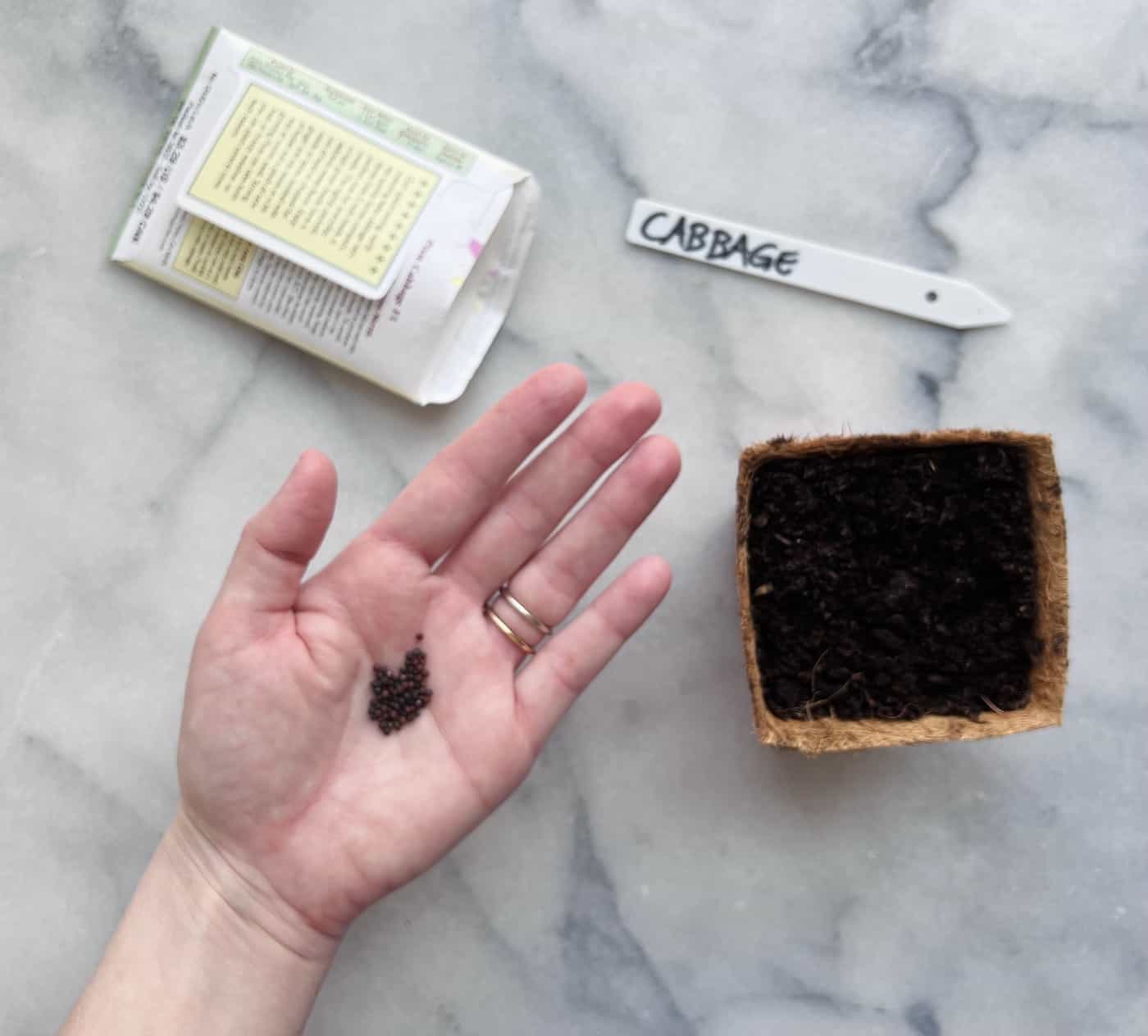
FAQs about how to plant cabbage seeds
What month do you plant cabbage seeds?
Cabbage seeds should be planted in the early spring, usually between March and May. For optimal growth, sow cabbage seeds six weeks prior to the average last frost date in your region for springtime planting. You can also plant them in late summer or early fall for overwintered cabbages.
How many seeds should I plant for cabbage?
It is recommended to plant 4-6 cabbage seeds per foot of row. Sow the seeds so they can be thinned to a distance of around 12 inches from each other, and cover with 1/4 inch of earth. Once the seedlings have grown 3–4 inches tall, thin out weaker plants so that only one healthy plant remains every 12–18 inches.
Before you go…
With the right knowledge and care, you can easily grow healthy and vibrant cabbages from these small seeds. By adhering to the steps delineated for both interior and exterior environments, you’ll be on your way to producing a plentiful harvest of scrumptious cabbage plants.
Resources
- Fall vegetables to plant in early autumn
- 7 early spring vegetables you can plant as soon as the ground thaws
- Soil temperature for planting vegetables (with charts)
- Best plants for a balcony vegetable garden
- Types of gardens best for growing vegetables
References
- Roberts, E. (2012). Viability of Seeds. Springer Science & Business Media.
- Toole, W. H. (1942). Storage of Vegetable Seeds. U.S. Department of Agriculture.
- Seed Saving 101: Everything You Need to Know
Need more info?
Are you interested in learning more about how to plant cabbage seeds? Here are our best articles about it!


